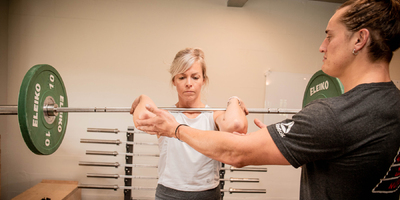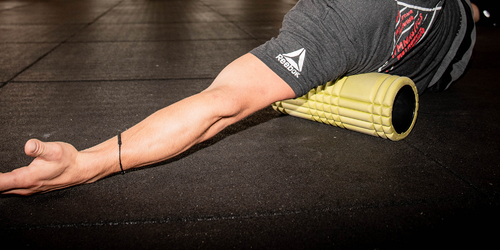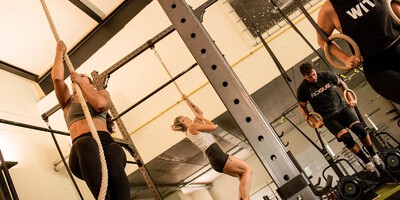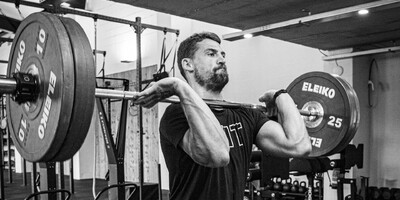What are trigger points?
Trigger points are also called muscle knots. They form at points in the body where the nervous system and muscles ‘talk’ to each other. Overexertion, stress or just too little movement (and even poor diet and dehydration) can cause the muscle fibres at these points to contract more easily. This, in turn, causes waste products to accumulate and reduces the blood supply (and oxygen) to the surrounding muscles. Using a foam roller or massage ball, we will actively (both reactively and preventively) work on these points.
Where can I find my trigger points?
Trigger points can form in as many as 620 places in your body – the list is practically endless! It is not easy to find them yourself because you will often only discover the active nodes because you experience muscle pain or other physical complaints. Even then, there is no guarantee; a trigger point in a gluteal muscle can cause pain right down to the ankle!
Once someone helps you to find various trigger points, you will be able to detect them much more quickly. By applying pressure to them, you will be able to feel the muscle knot or strand pop out from under your fingers.
Trigger points and CrossFit
Getting rid of these muscle knots is crucial when doing CrossFit. By breaking down the accumulation of waste substances, your blood (and therefore also oxygen) can once again flow much more easily to your muscles. This will result in you having more supple, healthier muscles, which will in turn help to increase mobility and prevent injuries. Having greater levels of mobility means that you can perform movements better, resulting in healthier, more durable joints.
During our classes we usually pay the most attention to trigger points in the neck, shoulders, back, chest and around the pelvis, since they affect the most common movements we do in our classes. We also make sure to include a weekly, specific trigger point. Would you like to learn more about this muscle therapy and how you can minimise the risk of injury? You’re entitled to go to a free trial class with us!
Are you already familiar with this form of injury prevention and do your trigger points remain incredibly sensitive? If so, we can only recommend that you also look at your sleeping and eating patterns. The same goes for stress at work or pressure you’re putting on yourself... Our tip? Take good care of your body... it's the only place you spend your entire life!



